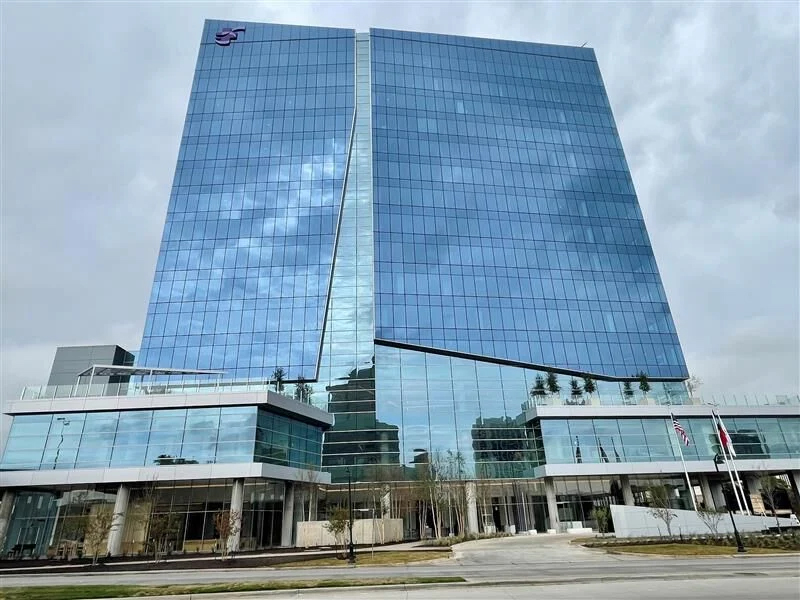Democrats made gains in East Texas, while region stayed key for Republicans
Published 5:00 pm Monday, November 12, 2018

- Ronald Hollins sheds a tear as he hears that the Texas senate race winning projection has been called for Ted Cruz during a midterm election Democratic watch party at Roast Social Kitchen in Tyler, Texas, on Tuesday, Nov. 6, 2018. (Chelsea Purgahn/Tyler Morning Telegraph)
Democrats in the historically conservative counties in East Texas made some inroads during the 2018 midterms, even though they lost most counties overwhelmingly.
The party’s 2018 candidate for U.S. Senate, Beto O’Rourke, was more successful in East Texas than the most recent Democratic Senate candidate before him, David Alameel, who ran in 2014.
The results have spurred some optimism in the region, where incumbent Sen. Ted Cruz won most counties over O’Rourke by more than 50 percentage points, and whose victory would not have been possible without those margins.
“There was something unusual about this year, and I think everyone would agree,” said Karen Wilkerson, a member of the state Democratic Party’s executive committee who represents Northeast Texas.
She said the candidate at the top of the ticket, O’Rourke, energized voters statewide, and candidates for county offices in East Texas helped register voters, mobilize volunteers and get people to the polls.
The Tyler Morning Telegraph looked at the Texas secretary of state’s election returns from Sen. John Cornyn’s 2014 re-election race against Alameel and Cruz’s 2018 re-election race against O’Rourke. The results show Democrats making gains and Republicans staying in the same place.
In the 41 counties of East Texas, Democrats increased their percentage of the Senate vote in 29 of them, and by a regionwide average of about 2.4 percentage points, while Republicans’ made more modest gains in 22 of them, with their average share of the vote regionwide staying roughly even.
Democrats saw the biggest gain in Nacogdoches County, where 35.7 percent of voters chose Beto O’Rourke for senator in 2018, compared with 21.3 percent who chose David Alameel for senator in 2014, a difference of 14.4 percentage points. The county’s population in 2017 was 65,580, according to the Texas State Library.
There was a 9.8 percentage point gain in Walker County (population 72,245); a 9 percentage point gain in Smith County (population 227,727); a 7.7 percentage point gain in Gregg County (population 123,367); and a 6.5 percentage point gain in Angelina County (population 87,805).
The average Democratic gain in counties with populations over 50,000 was 4.8 percentage points, compared with a fraction of a percentage point for the less-populous counties. Republicans saw an average loss in large counties of 2.5 percentage points, and an average gain of 1.6 percentage points in small ones, those with populations below 50,000.
To be sure, the Democrats did not win in 40 of the 41 counties, and without Cruz’s overwhelming margins in East Texas O’Rourke would have been the state’s next senator. Cruz won the state by a margin of 219,427 votes, according to the Texas secretary of state’s unofficial returns. His margin in the 41 East Texas counties was 355,540 votes.
“The engagement in some of the larger counties like Smith and Nacogdoches have given people not only the energy to move forward, but also a lot of technical ability in infrastructure and networking, and we’re building teams across not just this county but through to other counties as well,” Wilkerson said.
“And I think candidates also are beginning to realize how important East Texas votes are in increasing statewide totals,” she said. “We may not be able to turn East Texas blue, but we can certainly help turn Texas blue.”
Mark Jones, a political scientist at Rice University in Houston, said the gains in Nacogdoches and Walker counties most likely came from colleges in those counties, Stephen F. Austin University and Sam Houston State University, respectively, and he said they represent small pockets of success for the Democrats.
“But I would probably say that the results are just more disappointing than anything else,” he said. “While they’re better than 2014, 2014 was an abysmal year for Democrats” and a great year for Republicans. Additionally, he said Alameel even was unpopular among Democrats.
“Unlike the rest of the state, East Texas remained very Republican, less Republican than in 2014, but the shift, the gains by Democrats were much lower than we saw in the major metro areas or in suburban areas, by and large,” he said.
Skip Ogle, the vice president of the Smith County Republican Club and a former Republican candidate for the District 6 seat in the Texas House of Representatives, said he’s not concerned about East Texas going to Democrats.
“I really believe that the people of East Texas believe and accept the Republican platform, generally speaking, more so than the Democratic platform,” Ogle said. “The challenge will be for the Republicans to educate the general public of the platform and the intent of the platform.”
He’s not concerned about Texas becoming a blue state anytime soon.
“Texas was blue for a long time,” Ogle said. “I expect Texas to stay red for a long time. I don’t see that transition turning blue. We certainly didn’t see the blue wave of the left rhetoric, but we saw an impact, to be fair.”
Jones called East Texas and West Texas the “ace in the hole” for Cruz.
“One way to think about it is it is a step up,” Jones said. “It highlights if you’re a Democrat, where you’re going to look for growth in East Texas, and it’s primarily in Nacogdoches and Huntsville, but not so much in Tyler or Longview or the like.
He called it “remarkable” that Cruz was able to win Tyler and Longview by substantial margins while suburbs of Houston and Dallas swung so far toward O’Rourke.
“In some ways East Texas and West Texas were Ted Cruz’s ace in the hole, and without Cruz’s substantial overperformance in East Texas, Beto O’Rourke would have won.”
TWITTER and INSTAGRAM: @_erinmansfield







